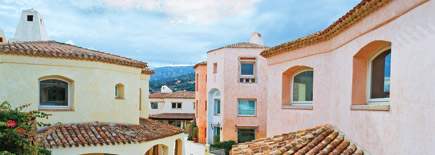The New York Times post on Sardinia, Italy
Interesting informations about house hunting for foreigners in an exclusive destination
Article written by Peter Sigal
… …. ….
Market overview
The most prestigious area on Sardinia is the Costa Smeralda, a short stretch of northeastern coastline centered on Porto Cervo, developed for the international jet set by the Aga Khan in the 1960s. Waterfront properties in Costa Smeralda have sold for tens of millions of dollars; by some measures the most expensive real estate in Europe is found there.
Areas just outside the Costa Smeralda and flanking it, along the peninsula bounded by Olbia to the east and Castelsardo to the west, are also popular with foreign buyers and well-heeled Italians. Properties close to the water, like the villa offered for sale here, start around $3 million, agents said, with homes slightly inland starting around $1 million. Restored or renovated stazzi, the local term for old farmsteads in the Sardinian shrubland, are also popular, said Melania Borrielli, the founder of ResRei, a buyer’s agent in Sardinia.
Ms. Borrielli also suggested that buyers consider the southern tip of Sardinia, around Cagliari, where excellent coastal properties start about $1.25 million. For the adventuresome, village fixer-uppers requiring gut renovations can be found around the island for as little as $65,000.
The Italian market has largely been flat since the beginning of 2012, agents said. “If you take the last couple of years, we have seen a moderate fall in prices,” said Rupert Fawcett, the director of Italian sales for Knight Frank. “Prices have come off by about 10 percent since the high point in 2007.”
“Across the board,” he added, “it has been a difficult couple of years, where you have buyers feeling that prices need to come off and vendors reluctant to bring them down. We’re looking for a more buoyant year. We are experiencing some moderate pickup now.”
In the heart of the Costa Smeralda, prices are not falling by much, said Daniela Ciboddo, the director of the Porto Cervo office of Engel & Völkers, with the wealthiest buyers competing for a limited supply of seafront properties. Ms. Ciboddo described the Costa Smeralda market as being at a turning point, as the first generation of buyers from the 1960s and 1970s are passing the properties down to their children, some of whom are putting them on the market.
A quarterly national survey of real estate agents conducted by the Bank of Italy found some reason for optimism. Fewer agents reported a decline in selling prices in November compared with July, and the percentage of those reporting stable prices rose by eight percentage points, to 31 percent from 23 percent. The difference between asking prices and selling prices remained stable, at about 16 percent — meaning buyers should be looking to negotiate, agents said.
Who buys on Sardinia
Julia Bracco, the director of Immobilsarda’s office in Porto Cervo, said that 75 percent of her agency’s buyers were from outside Italy, with Russians buying at the highest level — $13 million and up — and that Northern and Western European buyers predominated for properties ranging from $2 million to $4 million.
A study by Knight Frank found that in 2012 the most numerous buyers were from Russia and former Soviet countries, followed by Italy, Britain, Scandinavia and the United States.
In recent years Italians have largely held back from the market, agents said, with the country’s economy stagnant and the political situation unsettled. But Ms. Bracco said Immobilsarda was starting again to see interest from Italians “who consider a second home in Sardinia as a strategic, safe investment.”
Buying basics
There are no restrictions on foreign buyers, agents said. Transactions are conducted through a notary, who handles negotiations and contracts and ensures that fees and taxes are paid to the proper authorities.
Mr. Fawcett says transaction costs for buyers are about 10 percent of the purchase price, with taxes making up 4 to 5 percent and notary fees of 1 to 2 percent. In Italy, the agent’s fee, normally 6 percent, is divided equally between buyer and seller. He says his agency advises foreign buyers that they should consider retaining a lawyer, though it is not a necessity.”
To read the full article by Peter Segal on the New York Times click on this link

